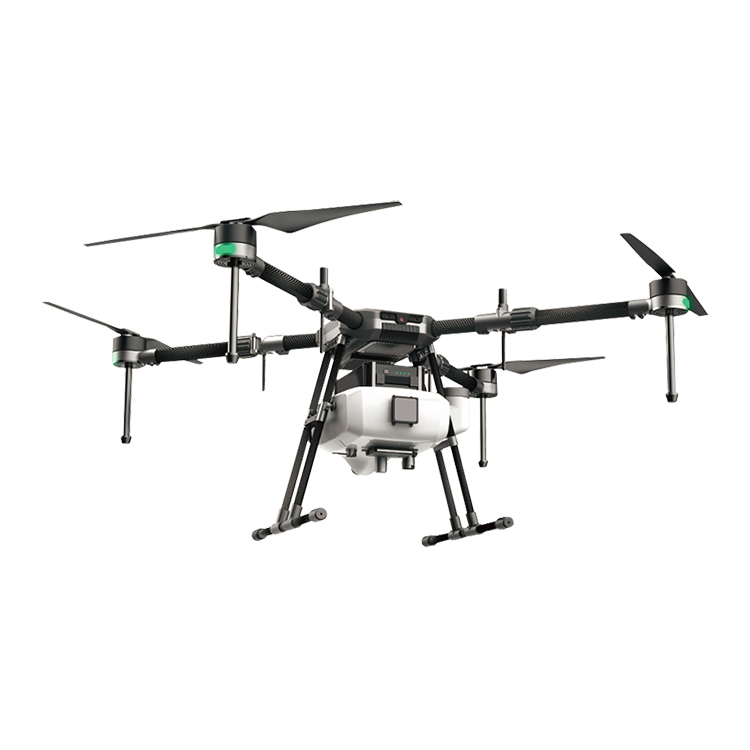The benefits of agriculture drone

While drones have been used in private industries for decades, their commercial applications continue to expand as quickly as innovators can come up with new ideas. As drones become more prevalent in our society, much of this growth is attributed not only to declining costs of technology but also to the adjustment of government restrictions on drone use. The agriculture industry, which continues to incorporate new and evolving technology, has found drones to be an indispensable tool for farmers around the world.
Drone technology is useful for a variety of applications, such as scouting out new field locations, providing quick and easy ways to remotely check small sections of crops, and surveying entire fields. Drones are helping farmers address several of the developing challenges in the industry. The use of drones can help to increase productivity, permitting for improved agricultural adaptation to the effects of climate change; they can also assist in the reduction of pollution.
Improved Productivity
One of the most promising and exciting benefits of agricultural drones is their ability to meet the demands of growing populations. Experts predict the world’s population will reach 9 billion by 2050. At the same time, agricultural consumption is projected to increase by nearly 70 percent. The needs of the ever-growing farming industry, combined with the difficulty that comes with monitoring so many crops, have created many obstacles that drone technology can help to overcome. Currently, farmers rely heavily on satellite imagery, which is the most sophisticated form of crop monitoring to date. There are, however, many limitations to this technology, and drones are quickly replacing satellites as the preferred tool for many jobs. Satellite images are not proactive enough and must be ordered in advance, farmers can only retrieve images once a day, and the images lack precision. These images are also extremely expensive, and the quality depends on variable factors like the weather.
Giving growers the ability to quickly and easily analyze entire fields at once has many advantages. Today, images from drones can indicate the development of a crop with precision and can locate underperforming areas, enabling better crop management. Drones can be outfitted with countless combinations of sensors to fit a farmer’s needs. Various sensors can also be used to pick out healthy plants from the unhealthy ones, while others simply compare color differences in crops which are undetectable to the human eye. Some sensors detect heat or moisture to determine crop health. Maps like this can help farmers greatly in pinpointing problem areas of a crop. All of this ultimately helps growers catch problems early and allows them to continue to improve the productivity of their crop.
Adaptation to Climate Change
Extreme weather is becoming an unfortunate reality for many farming operations. The effects of climate change are creating a growing list of obstacles to productivity, such as drought, flood, and damage caused by storms. As a result, agricultural producers are seeking out new strategies to improve production and increase efficiency – through the use of drone technology, farmers are successfully working towards sustainability.
Irrigation is the number one concern for farmers who are faced with longer and more dramatic droughts. Drones equipped with the right sensors can identify which parts of a field need more water. Farmers can use this real time information to make the proper adjustments to their fields and use their resources optimally and without waste. Additionally, the information gathered by the drones can help farmers perfect the level of water in the field to create peak growing conditions tailored to specific crops. When crops are damaged from storms and other unpredictable weather conditions, drones equipped with the right imaging equipment can be used to estimate crop loss. This helps to speed clean up and repairs while mitigating both risk and field maintenance costs for the farmer.
Reducing Pollution
Agricultural runoff from industrial fertilizer and pesticides is a major health concern. By checking on plant health and pinpointing troubled areas, drones produce valuable data that farmers can use to reduce chemical application by only administering chemicals in a very targeted manner. Drones can also be equipped with equipment that gives them the ability to scan the ground and spray the precise amount of chemicals at the perfect altitude needed for any application. This dramatically reduces the amount of chemicals used and virtually eliminates overspray. The ability of a drone to make real time adjustments greatly improves efficiency over outdated and haphazard crop dusting.
Remotely accessing fields can help detect bacterial or fungal infections early, and a rapid response to such infections can save an entire crop. The capability to react quickly allows farmers to apply and monitor remedies more precisely.
More videos about drone spraying for crops you will see.


